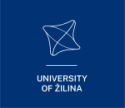
Conference Tutorial
Humanitarian Demining: Efficiency by Intelligent Planning and Low-Cost Robotics
 |
Prof. Dr.-Ing. Rinaldo C. MICHELINI DI SAN MARTINO Rinaldo Michelini is professor at the school of Engineers of the University of Genova, Italy. Member of IFIP WG 5.3 (CIME) and WG 5.5 (COVE), ASME (Fellow), SCS (Senior), Russian Academy of Engineering (Correspondent), etc. . Author/co-author of over 500 technical papers/chapters/books, in the domains of integrated design, robotics, expert automation, industrial diagnostics, etc |
 |
M. Udayanga Hemapala obtained the degree in Electrical Engineering in Sri Lanka, and is presently at the PMAR Lab, DIMEC of the University Genova, to attend the PhD school, mechanical engineering section. |
Abstract
Land mines are weapons developed to be disseminated on the ground, or close beneath the soil, and to explode because of the contact or the proximity of a person or vehicle. Basically, one distinguishes: AP anti-personnel and AT anti-tank land mines, depending on their disruptive potential (and cost). In principle, both were developed for military purpose to create forbidden zones, where the enemy could not enter. Actually, the low-cost of the AP land mines transforms them into munitions, to be spread in the country, making highly risking any further use for civil (agrarian, etc,) exploitation. On these facts, the Ottawa Convention prohibits in all circumstances their use, manufacture, trade and stockpile and requests their destruction, because the armed forces objectives cannot justify the falls-off in humanitarian disruption.
This Convention is promoted by the UN and ratified by several Nations; is left aside by other ones and, of course, ignored by the population where guerrilla-like warfare is going on. The land mine risk, thereafter, is typical problem of the under-developed countries.
You can download the complete text of the tutorial abstract here.![]()
You can download the complete text of the tutorial here.











